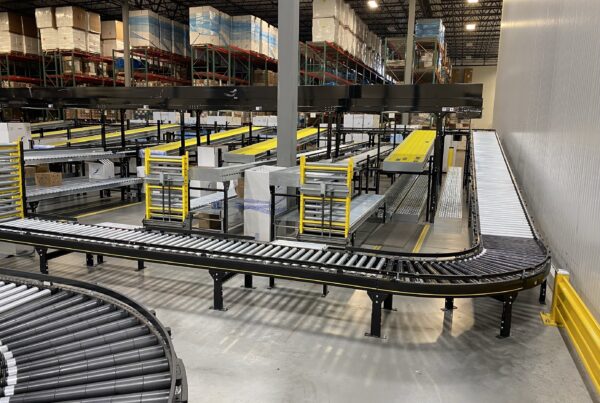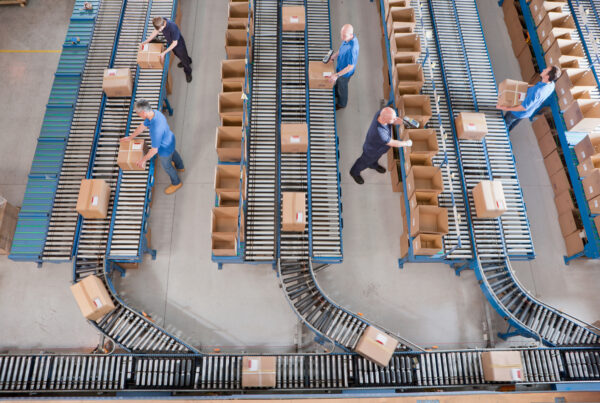Manual vs Automated Material Handling: What is Best for Your Business?
Material handling system refers to a comprehensive set of tasks, including movement, packing and unpacking, storage, protection, and control of products and materials. From manufacturing and warehousing to distribution and disposal, material handling systems are valuable to every operation.
Various types of material handling systems are employed in various industries. Automotive, food & beverage, consumer goods, construction, E-commerce, healthcare, and retail, are a few examples of industries that witness a wide application of material handling systems.
Manual Material Handling Systems
Manual Material Handling or MMH is the process of handling or moving materials using manual labor. MMH includes pushing, pulling, lifting, retrieving, controlling, carrying, and holding.
Though manual, this type of handling requires the use of equipment such as manual cranes, pallet trucks, slings and hooks, short-distance conveyors, and forklifts.
Advantages of Manual Material Handling System
Cost-Saving – Manual material handling does not require a heavy initial investment. It is easy to set up these systems. As initial investment is low, return on investment is quick to be realized.
Easy for Employees to Adapt – Manual material handling systems do not involve advanced technology. So, there is no intense employee training required. There is a necessity for safety training though to ensure that employees handle equipment safely.
Since this system does not require employees to have technical expertise, it becomes easier for them to adapt to the new environment.
Availability of Greater Space – Manual system does not involve the use of extensive or heavy equipment, which increases the amount of usable space.
Improves Process Efficiency – Involvement of experienced and well-trained employees ensures efficient task completion. As a manual factor is involved, dynamic processes, which see a change of parameters frequently, can be completed with great efficiency.
Ensures a Safe Working Environment – With regular safety training, employers and employees become aware of the safety precautions they need to implement while handling materials manually. As a result, the workspace is safer and accidents due to negligence are minimized.
Attracts Employees – Since manual material handling depends on labor, retaining as well as attracting new employees are crucial. A good and safe workspace based on the principles of a material handling system is sure to retain and attract employees.
Facilitates Better Customer Service – Well-trained labor, increased process efficiency, and improved productivity, lead to better delivery times and increased customer satisfaction.
Disadvantages of Manual Material Handling
Difficulty to Scale – Manual material handling can be employed for only one process at a time. If your business scales up and your operation needs to handle multiple operations simultaneously, then manual handling cannot match the demand.
Error–Prone – Human intervention makes manual material handling prone to errors and inaccuracies. For example, there could be errors in inventory management and order fulfillment.
Mandatory Safety Training –Employees need safety training to handle equipment and operations without the risk of injuries or death. Such training needs to be undertaken regularly to keep employees up-to-date with new and updated safety practices.
Automated Material Handling Systems
Automated material handling systems are pre-programmed computerized systems with built-in technology for task completion. These systems feature advanced technology for material movement, storage, access, and location.
Automated material handling may require manual interference for tasks such as picking, dropping, and pushing. Some examples of automated handling equipment include scissor lifts, dock levelers, pallet positioners, and automatic conveyors.
Automated Material Handling Benefits
Increased Flexibility – Automated systems are flexible. If you are scaling your operations, then you can program these systems accordingly to handle more than one process at a time. With proper planning, you can use automated systems to scale up or downsize in real time.
High Cost-Efficiency – Automated systems save money in the long run. The technology may be expensive, especially if it is a customized product. But the cost can be compensated because manual labor is reduced. With automation, tasks can be performed faster and with precision, which increases productivity.
Enhanced Workplace Safety – With automated handling, employees will not have to lift or carry heavy weights, which reduces the risk of trip-and-fall accidents. Risks of physical problems such as lower back pain, back injuries, and fatigue, are also minimized.
Space Optimization – Space can be used with maximum efficiency. For example, automated equipment such as forks enables access to spaces located higher. This space can be used to stack products without wastage.
Products can also be retrieved faster and with ease through the use of an automated handling system. Existing space is used to create more space and is used efficiently.
Enhanced Order Fulfillment and Delivery – Automated handling minimizes errors in order handling, improves the shipping process, and quickens delivery. As a result, customer service is improved.
Better Employee Morale – Employees with technical expertise will show interest in your business. A workstation that protects employees from accidents and injuries is an attractive draw for employees experienced in material handling and logistics. You will be able to retain existing employees and attract new employees.
Which Material Handling System is Best for my Business?
Manual and automated material handling systems come with their own benefits and drawbacks. The type of material handling system design and the decision depends on several factors. Business budget and material volume are two key factors. Today, in order to properly have a successful warehouse, managers and investors need to do two things.
If you expect your material-handling orders to increase in the future, then an automated system would work better. If you have an existing manual system and are looking to upgrade, then automation on a small scale could be a prudent first step.
Small businesses and businesses that handle dynamic processes can benefit from manual material handling. Businesses such as manufacturing and warehousing, which deal with large volumes of material handling and repetitive tasks on a daily basis benefit from automated systems.
SRSI is here to help you discover the best solution for your business. Whether you are looking to grow or refine your operations, our team is equipped with a compiled 100+ years of experience to help you become the best in your industry space. We will assist with every step including consultation, project proposal plans and management, and even post-project support and maintenance. Contact one of our Solution Specialists to get started today.
 Skip to main content
Skip to main content






